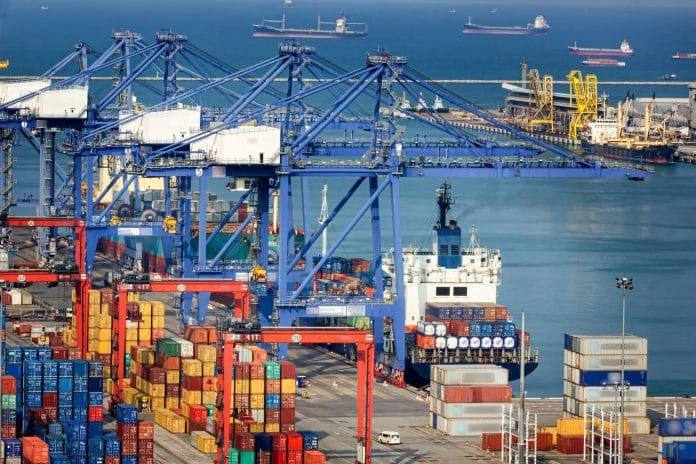By Evelyn S. Devadason, University Malaya
What can we expect from 2024?
The World Trade Organization (WTO) Global Trade Outlook projects a stronger trade growth of 3.3% in 2024 relative to 2023. The 2024 trade forecast should be read with caution given the 2.9% predicted slowdown in global growth by the International Monetary Fund (IMF), continued global uncertainty (linked to geopolitical tensions, monetary policy- and financial market volatility) and fragmentation of the world order.
Signs of Fragmentation
First, recent evidence on the realignment of global values chains (GVCs) – decrease in direct linkages between China and the United States (US); shifts in Chinese manufacturing to its own interior parts; and tightening of regional supply chains in Asia – suggests nearshoring or on-shoring is indeed happening, albeit on a small scale. While nearshoring or onshoring may increase supply chain resiliency, it creates new winners and losers and comes at a cost.
Second, the persistent headwinds from trade (and investment) restrictions are becoming a dangerous global trend amidst the escalating battle of dominance in a technology-driven world. From a microchip tech war with chip sanctions, recent export restrictions and export bans focus on minerals, metals, and other natural resources. China’s export restrictions on graphite and Indonesia’s export ban on bauxite are some recent examples. Such resource restrictions create global shortages, result in trade-limiting responses by injured countries and potentially shift the power towards mineral rich nations.
Third, the rise of small-scale collaboration between like-minded States to address mutual goals implies that “minilateralism” is here to stay. These include the I2U2 Group [India, Israel, United Arab Emirates (UAE) and the US], Mangrove Alliance for Climate (Indonesia, UAE, India, Sri Lanka, Australia, Japan, and Spain), and Chip 4 Alliance (US, Taiwan, Japan, and South Korea), just to name a few minilaterals. Regarded as the second-best option to multilateralism that is practical and results-oriented, the momentum of (middle-power) minilaterals could promote contention, result in conflicting agreements (or arrangements), and exacerbate global power imbalances.
Although some spinoffs of a fragmented world order, such as nearshoring, friend-shoring, onshoring, and minilateralism, provide tangible benefits, the associated macro risks of these developments should not be overlooked. According to the IMF, geo-economic fragmentation could also negatively affect Malaysia’s growth prospects.
Malaysia in 2024 – Are we too optimistic about the trade outlook?
Better export prospects are envisaged for Malaysia in 2024 in tandem with the anticipated recovery in global trade activity and China’s recovery, the positive outlook for the global semiconductor market and the expected inflammation of the commodity market. The 2024 export forecasts by the different institutions in Malaysia range from about 3.5% on the low end (United Overseas Bank) to 4.7% on the high end (Malaysian Industrial Development Finance). That said, the unexpected sharp export contraction of 5.9% y-o-y in November 2023 for Malaysia signals the importance of navigating uncertainties around external demand in 2024.
One should be “cautiously optimistic” on predicating favourable external demand on the recovery of China, the strength of the semiconductor sector and the rise in energy prices for the following reasons.
To begin with, there are uncertainties about China’s economic performance in 2024. According to the World Bank, China’s economy is still considered ‘fragile,’ underpinned by subdued external demand for its exports and property downturn, among others. If that is the case, downside risks will predominate for Malaysia due to its strong output co-movements with China relative to the other Southeast Asian countries. For example, estimates from our research suggest that a 1% gross domestic product (GDP) shock in China prompts the largest output impact of 1.09% in Malaysia through the intermediate goods trade channel.
Instead, the flagging Chinese recovery spillovers in Malaysia should be watched closely. In relation to that, the density of Malaysia’s trade connections with China needs to be reassessed as China has already ascended in the GVCs. Further to that, China’s current realignment of supply chains away from the US to Southeast Asia (including Malaysia) should not be exaggerated as they are mere extensions rather than replacements.
Uncertainties also prevail in the relevance of the Malaysian semiconductor (chip) sector given the country’s prominence in back-end activities. Though Malaysia accounts for a significant 13% of the global market for semiconductor packaging, assembly, and testing, and is now placed to capture the assembling demands from the Chinese chip design companies, there is immense pressure for this sector to innovate and move towards front-end activities to stay ahead of competitors in ordinary chip packaging like Vietnam. There are also concerns that (advanced) chip packaging will emerge as the next front in tech wars.
Finally, the unpredictable movements in commodity prices reflect the resulting mixed predictions for 2024. According to the World Bank, oil prices will decline in 2024 in response to slower demand and improved non-OPEC (Organization of the Petroleum Exporting Countries) oil supplies. Other projections suggest a modest rise in energy prices amidst mounting geopolitical risks from Ukraine and Russia to Israel and the broader Middle East. As a major oil exporting country, though Malaysia benefits through higher export receipts from oil price increases, the direct benefits for trade should be weighed against the macroeconomic implications of oil price hikes. Based on our research, a negative oil price shock (a price increase) results in a contraction of output in the long run even for a net oil exporter like Malaysia.
The trade outlook for Malaysia is certainly fraught with uncertainties and the risks are mostly external!
Evelyn S. Devadason is Professor at the Faculty of Business and Economics, University Malaya, and Vice-President of the Malaysian Economic Association.










